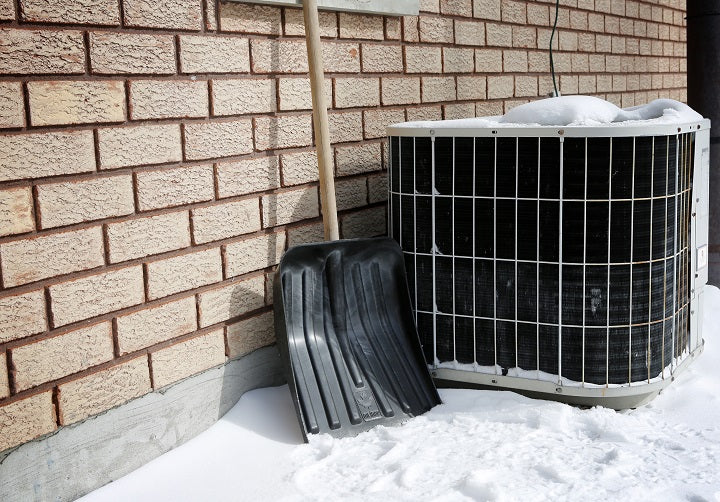Soon enough, winter weather will be in the forecast. That is – unless you’re fortunate enough to live in an area of the country that doesn’t see extreme snow, ice, and brutally cold temperatures this time of year. For everyone else, now is the time to make sure your home is prepared for the season ahead.
While it isn’t too uncommon to switch from using your AC during the day to using your heater at night during the fall season, you’ll likely soon be making the switch from ‘COOL’ to ‘HEAT’ on your thermostat and keeping it there for several months until warm weather arrives again next year. Before your air conditioner is ‘out of sight, out of mind’ so to say until next spring, there are a few simple tasks you need to do ahead of time to keep it protected until your family is ready to use it again.
Tip #1: Clean the area around the AC.
Now is the time to make sure that the outdoor part of your air conditioning system – the condenser – is free of any build-up of leaves, twigs, acorns, pinecones, and other outdoor debris. Trim back any tree limbs that are growing too close to the unit as the branches could get broken off during a winter storm and land on top of your condenser, potentially causing serious damage. You should also cut any bushes back that are growing within two feet of the unit to help keep the space clear.
It’s never a good idea to use your condenser as a place to store things on top of, and we realize that many homeowners may do this during their AC’s ‘off-season.’ However, this is not the place to put your outdoor lawn furniture, rugs, yard equipment, etc. on top of. Put those items safely away in your shed, garage, or basement instead.
Once you’ve cleared all outdoor debris off and away from your condenser, use your garden hose to give it a good cleaning. Be sure to do this during the day so the unit has time to air dry before cooler weather arrives overnight and potentially causes the moisture inside to freeze.
Tip #2: Add insulating materials.
You may choose to insulate the pipes connecting your condenser to the inside of your home. There are rubber and foam materials found at your local home improvement store that can be used to wrap around any exposed piping. This may help to prevent damage to the pipes if you live in an area that experiences heavy snow or ice storms during the winter months.
Regardless of what type of material you choose to use to insulate the pipes, make sure it’s something that can easily be removed once spring weather arrives. Be sure the material is secure and snug, but steer clear of using any heavy-duty glues or adhesives which could be difficult to remove later on.
Tip #3: Remove any build-up of snow or ice.
After a snow or ice storm has finished, be sure to go outside and remove any accumulation from the top and sides of your condenser. It’s recommended for you to carefully use a shovel to remove snow around the base of the unit and use your hands to remove build-up from the top. While it may be tempting to use the shovel to remove the accumulation, you could accidentally damage the top of the condenser with it as you’re scraping snow and ice away.
Removing this build-up will help to prevent moisture damage inside of the condenser – a problem you won’t know about until you flip your air conditioner back on again when warmer weather arrives.
Tip #4: Do NOT cover your condenser!
Many cooling experts agree that you shouldn’t cover your condenser during the late fall and winter months. While it may seem like a good idea to keep it covered and ‘protected’ against the elements, this could actually do more harm than good. A covered AC condenser may trap moisture from melted snow or ice inside and this may lead to mold or rust issues.
Additionally, a covered condenser makes for a nice ‘home’ for unwanted critters that may hang out in your backyard, such as rats, mice, possums, snakes, raccoons, and so on. Their comfy residence may lead to damage inside the condenser to wiring and other internal components.
Bonus tip!
Now is also a great time to schedule a heating maintenance appointment for your furnace. During a tune-up appointment, the professional technician sent to your home will clean and inspect your unit to be sure things are working as efficiently as possible. They’ll also make sure that your furnace is operating safely. Proper annual maintenance is key to preventing many unexpected and expensive breakdowns during the dead of winter.
Not sure who to turn to for heating maintenance help? At Oncourse Home Solutions, we offer an affordable Heating Maintenance Plan. When you’re enrolled, you’re entitled to one yearly tune-up appointment for your home’s furnace or boiler. Want to learn more or have questions? You can call us at any time, or feel free to chat with a customer service representative by clicking the Click to Chat tab on the right side of the page.


